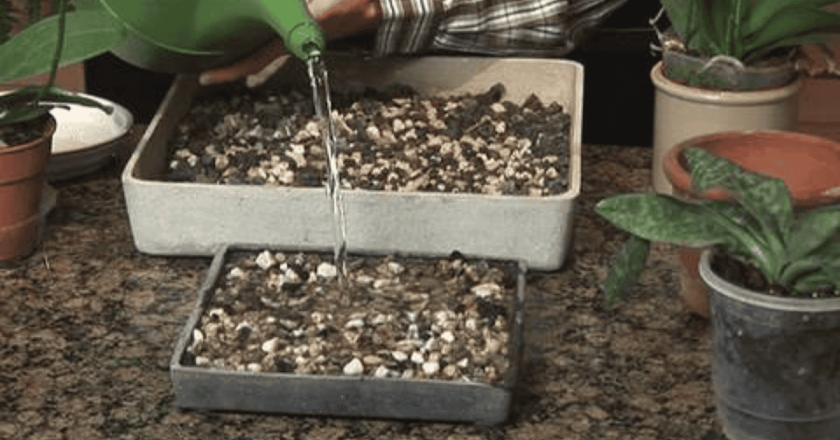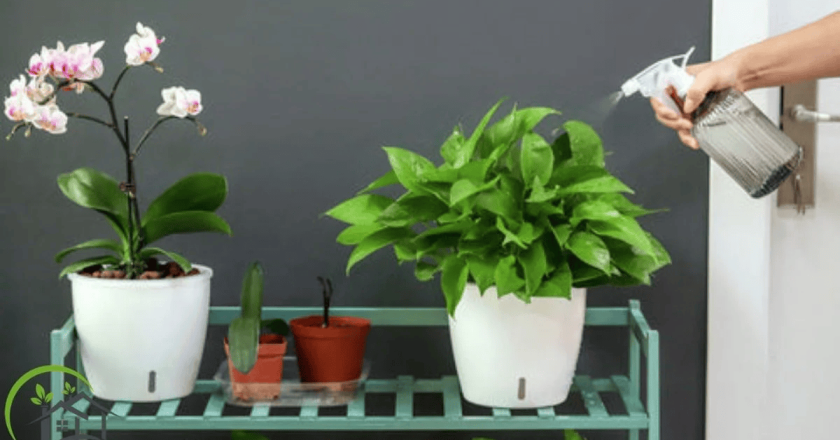As climate patterns shift and summers grow hotter, gardeners are adapting with more intelligent choices, choosing drought-resistant plants that flourish with less water. These resilient selections don’t just survive dry spells; they thrive in them, offering color, texture, and pollinator support even in the harshest sun.
Whether you live in a dry climate year-round or want to conserve water, integrating drought-tolerant plants into your landscape is practical and beautiful.
🌞 Why Choose Drought-Tolerant Plants?
Let’s face it—gardening can be a labor of love, but it shouldn’t feel like a battle against nature every time the weather shifts. That’s where drought-tolerant plants shine.
These plants are built for resilience. They’ve evolved to thrive in harsh conditions—dry soil, intense sunlight, and long gaps between watering—and they do it all without looking like they’re struggling.
Here’s why gardeners, landscapers, and even city planners are turning to drought-tolerant options more than ever:
-
💧 Lower Water Bills: These plants don’t need as much hydration. That’s money saved and a big win in regions with water restrictions.
-
🧘♀️ Less Stress During Heatwaves: While other plants wilt or burn, drought-hardy species take the heat in stride—no daily check-ins or emergency watering sessions required.
-
🌍 Climate Resilience: As weather becomes more unpredictable, choosing plants that can handle extremes is an innovative, future-proof strategy.
-
🐝 Pollinator Friendly: Many drought-tolerant plants—like lavender, verbena, and salvia—are magnets for bees, butterflies, and beneficial insects.
-
🌞 Ideal for Full Sun: These aren’t shy, shade-loving wallflowers. Most drought-resistant plants thrive in open, sun-drenched spaces where others might wither.
And here’s the real surprise: you’re not giving up beauty. Not even close. These aren’t rugged survivors with dull leaves and no personality. Many have vivid blooms, aromatic foliage, and bold textures that make your garden feel alive, even in the height of summer.
So whether you’re working with a small balcony or a sprawling backyard, drought-tolerant plants offer a beautiful way to garden smarter, not harder.
🌵 Practical Considerations for Dry-Climate Gardening

Even the most drought-tolerant plants need a little setup to thrive. You can’t just drop them into dry, compacted soil and expect miracles. Think of it this way: you’re not just planting for today but preparing them for the seasons ahead.
Here’s how to give your garden the strongest possible start in low-water conditions:
🌱 1. Start With Better Soil
Yes, even drought-resistant plants appreciate decent soil. That doesn’t mean soggy or overly rich—it means well-draining and supportive. Add compost or organic matter to help the soil hold just enough moisture without turning into a swamp. This step is constructive if you’re dealing with sandy or rocky ground, which can dry out fast.
🪨 2. Mulch Like You Mean It
A thick layer of mulch (about 2 to 3 inches) around your plants does wonders. It keeps the soil cooler, locates moisture, and slows evaporation on scorching days. Depending on your aesthetic, try bark chips, gravel, or even pine straw. Bonus: it also cuts down on weeds, which would otherwise compete for water.
🚫 3. Skip the High-Nitrogen Fertilizers
It might be tempting to boost your plants with a heavy dose of nitrogen, but hold off. High-nitrogen fertilizers push out fast, leafy growth, which may look lush, but it’s also water-hungry and fragile in dry heat. Stick to balanced or low-nitrogen options to encourage hardy, sustainable development.
🌿 4. Timing Is Everything
If possible, plant in early spring or fall. These seasons offer more forgiving weather and give roots time to settle in before the peak of summer heat. A well-established plant will cope far better when dry weather hits than one still trying to adjust.
🌱 5. Think Small to Grow Strong
Large, mature plants may seem like a head start, but ironically, smaller plants often do better in dry climates. Why? Because they can adapt to your garden’s conditions from the beginning. Young plants establish roots gradually and adjust to your local soil, water, and sun exposure much faster than their full-grown counterparts.
Best Drought-Tolerant Plants by Category
Let’s explore drought-resistant plants by type—flowers, shrubs, perennials, and more—each suited to dry gardens and full sun locations.
🌸 Drought-Resistant Flowers

These colorful blooms offer brilliant garden displays without demanding daily watering:
-
Lavandula (Lavender) – Aromatic, pollinator-friendly, and thrives in full sun.
-
Eschscholzia californica (California poppy) – A classic wildflower with golden-orange petals.
-
Gazania – Bold daisy-like flowers perfect for borders and containers.
-
Calendula officinalis – Also known as pot marigold; easy to grow and medicinal.
-
Verbena bonariensis – Tall, airy flowers beloved by butterflies.
-
Cosmos bipinnatus – Feathery foliage and whimsical blooms that reseed easily.
Looking for full sun drought tolerant plants? These blooms thrive in heat and drought while brightening your garden with vibrant color.
🌿 Drought-Tolerant Shrubs

For structure and year-round presence, drought-tolerant shrubs are a solid choice:
-
Artemisia ‘Powis Castle’ – Silver foliage with a soft, mounding habit.
-
Abelia × grandiflora – Semi-evergreen, graceful, arching branches with soft white flowers.
-
Santolina chamaecyparissus (Lavender cotton) – Aromatic leaves, yellow button blooms.
-
Cytisus scoparius (Broom) – Covered in bright pea-like flowers each spring.
-
Elaeagnus angustifolia – Silvery-gray leaves and drought-hardiness to match.
-
Callistemon citrinus (Bottlebrush) – Striking red blooms and heat tolerance.
These drought resistant shrubs make ideal choices for hedges, foundation plantings, or water-wise borders.
🌿 Drought-Tolerant Perennials

For gardens that return stronger each year, consider these:
-
Nepeta cataria (Catnip) – A bee magnet with soft, scented leaves.
-
Eryngium (Sea holly) – Spiky, architectural, and drought-happy.
-
Baptisia australis (False Indigo) – Deep roots make this blue-flowered beauty a survivor.
-
Euphorbia characias wulfenii – Evergreen with dramatic chartreuse blooms.
-
Hylotelephium spectabile (Sedum ‘Autumn Joy’) – Succulent leaves and rosy flowers into fall.
-
Veronica spicata – Spikes of violet or pink, and a favorite for dry cottage gardens.
🌲 Drought-Resistant Trees and Conifers

Trees can be thirsty, but these varieties offer shade with less demand:
-
Koelreuteria paniculata (Golden rain tree) – Yellow flowers and showy seed pods.
-
Crataegus monogyna (Hawthorn) – Native and bird-friendly with spring blossoms.
-
Acacia dealbata (Mimosa) – Fast-growing and suited for Mediterranean-style gardens.
-
Pinus sylvestris (Scots pine) – A native conifer that tolerates wind and drought.
-
Cupressus arizonica – Blue-green foliage with excellent heat tolerance.
🌾 Drought-Tolerant Grasses

Ornamental grasses add movement, texture, and excellent water efficiency:
-
Stipa gigantea (Giant feather grass) – Graceful golden plumes in summer.
-
Pennisetum alopecuroides – Fountain-like growth with fuzzy blooms.
-
Briza media – Compact native grass with charming, nodding seed heads.
-
Panicum virgatum (Switchgrass) – Upright, architectural, and native to North America.
Many drought tolerant perennials and grasses pair well with gravel gardens and xeriscapes.
🌴 Drought-Resistant Palms and Succulents

-
Cordyline australis – Palm-like silhouette; perfect for coastal gardens.
-
Aeonium and Aloe – Architectural, exotic, and thriving with minimal moisture.
-
Sedum acre ‘Aureum’ – Carpet-like succulent that brightens rocky spaces.
-
Delosperma cooperi – Ground cover with jewel-tone blooms all summer.
Great choices for containers and Mediterranean-inspired garden designs.
🌺 Drought-Tolerant Plants for Containers

Not all dry-climate plants are ground dwellers. These are ideal for pots and hanging baskets:
-
Pelargonium (Geranium) – Classic container favorite.
-
Verbena – Colorful, trailing, and perfect for baskets.
-
Helichrysum petiolare – Silver, cascading foliage.
-
Tropaeolum majus (Nasturtium) – Edible, easy, and drought-resistant.
Tip: Always choose containers with excellent drainage and deep but infrequent watering to mimic natural rain cycles.
🌱 Additional Tips for Success in Dry Gardens
Designing a drought-tolerant garden isn’t just about picking the right plants—it’s about thinking through how they work together. The more intentionally you set the stage, the less work (and water) you’ll need later.
🌿 Group Plants by Water Needs
It might seem obvious, but it’s one of the most overlooked strategies: don’t mix thirsty plants with those that thrive on neglect. If you place water-loving flowers next to drought-hardy shrubs, you’ll either underwater one or drown the other. Instead, create “watering zones” in your garden—areas where plants with similar moisture requirements are grouped. It’s efficient, smarter for your soil, and easier on you.
🪨 Use Gravel or Bark Mulch to Reduce Evaporation
Mulch isn’t just for looks. In dry gardens, it’s essential. Spread a 2-3 inch layer of gravel, bark, or decomposed granite around your plants to lock in soil moisture and prevent the hot sun from baking the roots. Bonus? It keeps weeds down, too.
🌬️ Position Plants to Minimize Wind Exposure
Wind doesn’t just dry out your skin—it dries out your soil. Plants can lose water faster through transpiration in open or elevated spaces. Use hedges, fences, or even taller drought-tolerant shrubs as natural windbreaks to protect more vulnerable species and keep your microclimate more stable.
🌾 Embrace Native Plants Whenever Possible
Native plants are the unsung heroes of low-maintenance landscaping. Why? Because they’ve adapted to your climate over centuries. They’re often more resistant to pests, diseases, and—you guessed it—drought. Whether it’s a native grass, wildflower, or woody shrub, these plants already know how to thrive in your soil, seasons, and sun.
Also Read:
- Garden Calendar 2025: Best Times to Plant Flowers & Veggies
- 23 Blooming Indoor Plants to Brighten Your Home This Winter
- Care Tips for Christmas Cactus That Blooms Every Year
- How to Care for a Money Tree, the Luckiest Indoor Plant
- 33 Best Plants for Your Bathroom to Add a Spa-Like Feel
- Snake Plant Care Guide | Sansevieria Tips for Indoors
- Peace Lily Care Guide | Thriving Spathiphyllum Indoors
Final Thoughts: Flourish with Less
Gardening with drought-tolerant plants isn’t about giving up—it’s about gaining more with less. These resilient plants offer rich textures, vivid blooms, and aromatic foliage while thriving in harsh conditions. From the sway of ornamental grasses to the soft scent of lavender, they bring life and movement to your space with minimal upkeep. Plus, they support pollinators, reduce water use, and adapt easily to climate extremes.
Whether you’re redesigning your yard or adding a few hardy perennials, it’s a more innovative, more sustainable way to garden that lets nature take the lead. At the same time, you enjoy a vibrant, low-water landscape year-round.




